There are a lot of costs associated with owning a vehicle. Of course you’ve got to buy the car, but then you also need to pay for maintenance and insurance. If you’re in an accident, these expenses can quickly get out of control. Not only do insurance companies require time to investigate an accident, but it’s impossible to determine with 100% accuracy what happened.
For this reason, dash cams have become incredibly popular. Not only can they help you if you’re in an accident, but they can provide important evidence if you witness an incident. Dash cams are incredibly affordable, and can pay for themselves many times over if they’re necessary.
The question is, what kind of dash cam should you buy? Options can range greatly in both form factor and feature set. In this review, we’ll be taking a look at the Kidcia Dash cam. This model is affordable, but has a specification sheet that seems almost too good to be true. How does this model perform in the real world? To answer this question, we decided to go hands-on.
First Look
The Kidcia Dash Cam mounts to your windshield with a suction cup. The camera lens faces the road, and the LCD display faces you. This is the kind of camera that’s designed to be interacted with. It does require a little more space than the discreet cameras, but packs a whole lot of additional functionality. The camera records at 4K resolution, and has built in WiFi and GPS to help keep your data geo-tagged. The camera can be set to record all the time, or it can be configured to turn on only when the G-force sensors detect an accident or abrupt stop. Overall, this camera looks very impressive on paper. But to find out how it behaves in the real world, we’d have to test it ourselves.
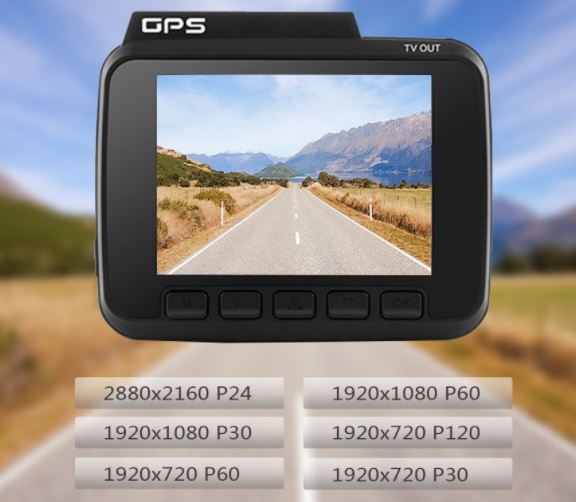
Design & Installation
Measuring 7 x 5 x 3.5 inches, this camera is roughly the size of a deck of cards including the stand. Before you buy, you should take a look at your windshield and see if there is any area you can place a deck of cards without obstructing too much of your vision. In our case, this was easy. We’d expect that the same can be said of most modern vehicles. However, some cars (such as the classic Westfalia or VW bug) have limited windshield space, and this design won’t work.
Getting it installed is a very simple process. Just push the suction cup against the windshield and lower the small lever. This helps keep the camera firmly attached, so it doesn’t fall off while the car is in motion. You then need to hook up a USB power source. You can use an existing charger in your car, or you can use the included charger to connect it to the auxillary power or cigarette lighter in your car.
The user-facing side of the camera is a compact 3” screen with five buttons on the face. These buttons can be used to navigate through on-screen menus. You can view a live feed, or you can review previously recorded information. The design is very minimalist, so it doesn’t distract you while driving. Although it doesn’t stand out, we found the simple design to be a huge asset in this case.
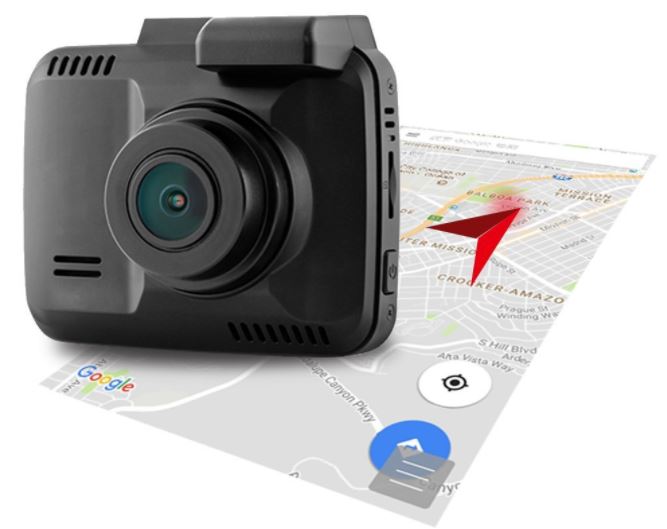
Functionality
The Kidcia dash cam saves all video files to a Micro-SD card. Although there isn’t one included, you can use pretty much any standard model on the market. Once you’ve got the card installed and the power source connected, the camera can be turned on and configured. There are a few different options available. You can manually start and stop recording if you like, or you can set it up to only record when an accident is detected.
Accident detection works by using the G-sensor, which is a lot like an accelerometer. Any time high G-forces are detected, a video is started. In our tests, we found this to be a little over sensitive. Heavy braking or taking sharp corners tended to save a video. Depending on how you look at it, this could be an asset. Afterall, it’s better safe than sorry.
One of the cool things about this camera is that it’s battery powered. If you need to unplug the charger to charge your phone while driving, it will still work. Additionaly, if somebody hits a parked car or tries to break in, the camera will have enough power to turn on and start recording a video.
There is a built in GPS that logs all location data to the saved video files. This tells you how fast you were going, and the exact location of your vehicle on each frame. To access the GPS data, you do need to use Kidcia’s free video playing software. A man recently beat a speeding ticket using GPS data, so you can rest assured that this data will be legally admissible if your video files are ever used in a court case.
Thanks to built in WiFi, accessing your videos is easy. You’ll never have to remove the camera or the SD card. You simply download the Kidcia app, connect to the WiFi network from your smartphone, and download all of your videos one by one. The process is quick and easy, something we like to see on a dash cam.
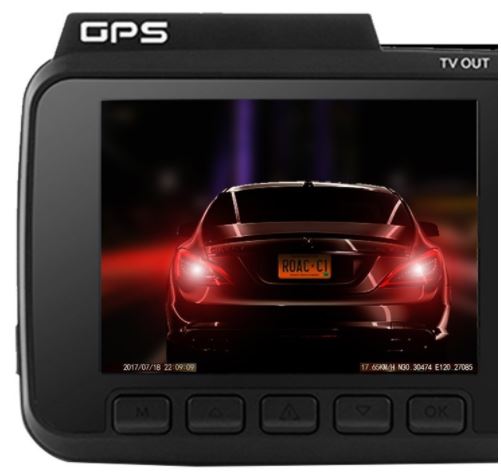
Video Quality
At 2880 x 2160, this is one of the highest resolution dash cams we’ve tested. Although this is advertised as 4K, it’s not true 4K. The camera has the same vertical resolution as a 4K video, but it’s a little shorter. The video file is actually 4:3 instead of 16:9. Think widescreen versus SD content, just a lot more detailed.
That being said, the video is still the sharpest we’ve come across. You can easily make out all of the license plates of the vehicles ahead of you, and small details are easily captured. Considering that this camera only costs a few dollars more than 1080p cameras, we’d consider this to be a huge bonus.
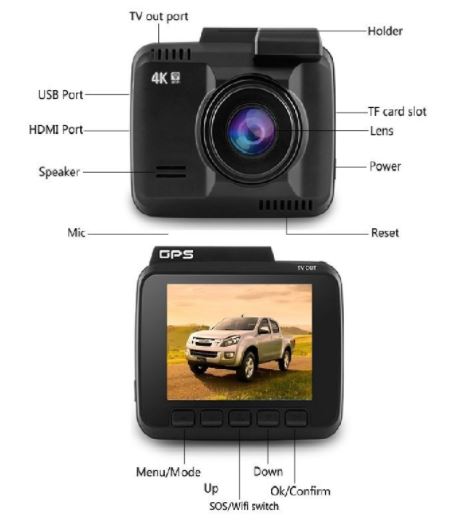
During bright daylight, the colors and clarity are fantastic. But this isn’t a feature that’s exclusive to the Kidcia dash cam. Many cameras can do the same. The real test is at night. When it gets dark, inexpensive video sensors and low quality lenses often produce video that is blurry, hard to read, and overall very disappointing. Luckily, this was not the case. It’s got an F/1.8 aperture. This means that the opening in the lens is very large and lets a lot of light in. When it’s very dark, your field of view is reduced a little. You can’t see things far in the distance as well as you can up close. However, everything close to your vehicle is very clearly defined and easy to see.
The camera does have a fairly wide angle lens. Despite the non-widescreen display, this allows you to get a very large field of view. From vehicles immediately to your left and right as well as the ones in front of you, there is a lot to see on the captured footage. You do get a little bit of a fisheye effect, where the image appears slightly rounded. But the advantages greatly outpace the disadvantages in this case.
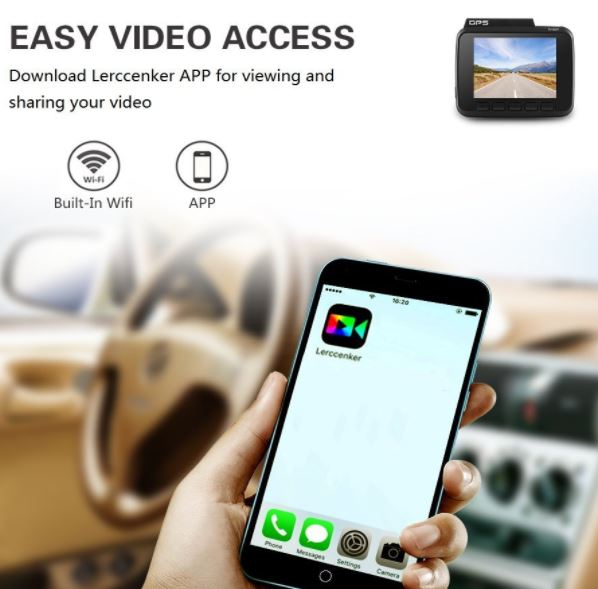
Disadvantages
With a built in GPS sensor and WiFi, we would have loved to see the dash cam feature built in navigation. There is a speaker, so we see no technical reason why this couldn’t have been implemented. Since it does occupy a little space on your windscreen, it would be nice to see this space put to good use. Unfortunately, you probably won’t find much use for the on-board display unless you want to review video files without a smartphone.
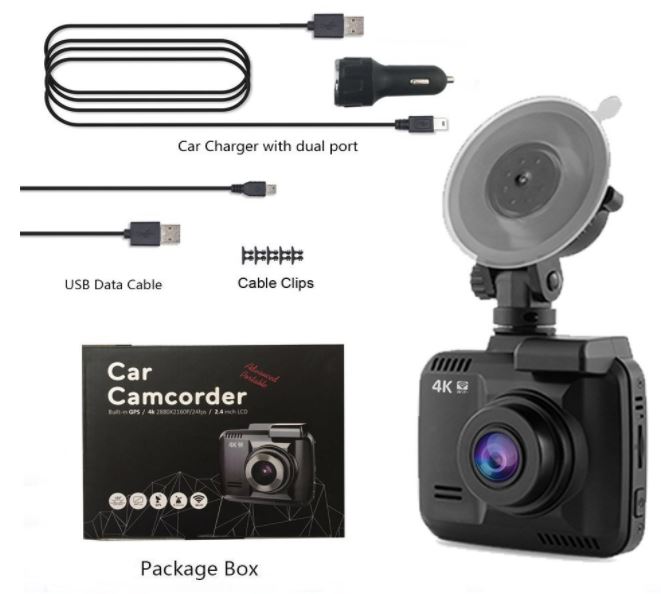
Final Verdict
Overall, there is a lot to like about this affordable dash cam. The two most important features are the resolution and the GPS. The high resolution means that you’ll be able to see every little detail, and the GPS ensures that you’ll be able to identify the locations that a video file was recorded.
Additional advantages to the Kidcia Dash Cam include the G-force sensor so you don’t have to manually start it, as well as the fact that it will run even when your car is off. Kidcia has shown us just how far dash cam technology has come, and this cutting edge model is available at the same price as entry level models. You will need to buy an SD card, but this is a purchase that you won’t regret.
Meet Ry, “TechGuru,” a 36-year-old technology enthusiast with a deep passion for tech innovations. With extensive experience, he specializes in gaming hardware and software, and has expertise in gadgets, custom PCs, and audio.
Besides writing about tech and reviewing new products, he enjoys traveling, hiking, and photography. Committed to keeping up with the latest industry trends, he aims to guide readers in making informed tech decisions.

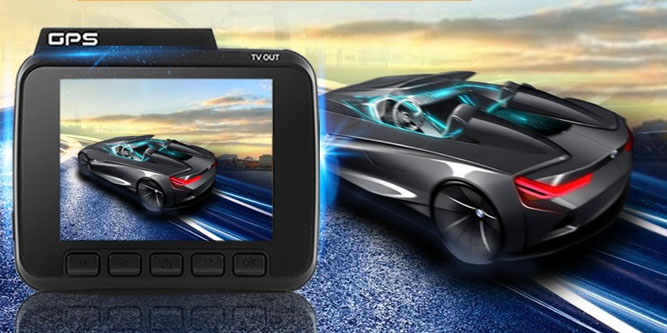
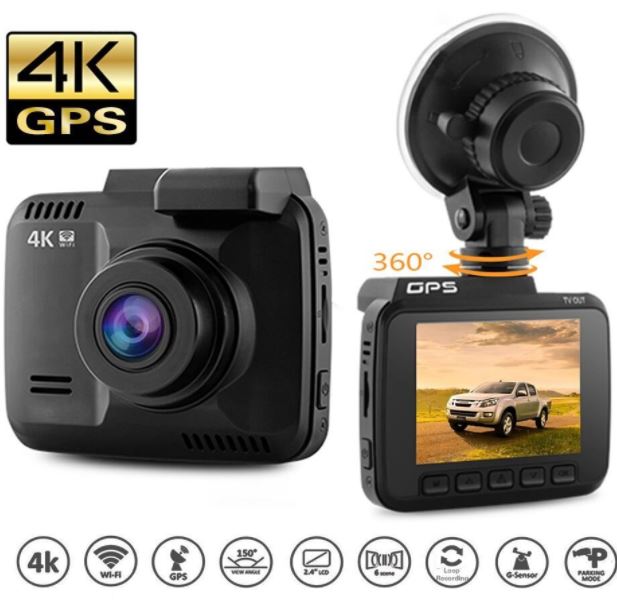
Thankyou, made up my mind from a lot of confusing on line information. Very informative and easily understood.